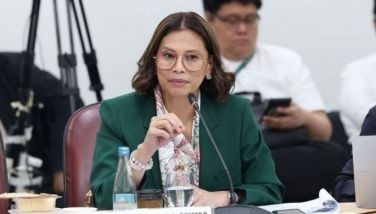Proposed RP-Taiwan economic corridor to spur growth in Clark

November 24, 2005 | 12:00am
A proposed economic corridor between the Philippines’ two special economic zones in Clark and Subic and the port city of Kaohsiung in Taiwan is expected to spur the development of industrial parks in Clark, according to Romulo V. Manlapig, deputy director and Trade representative of the Manila Economic and Cultural Office (MECO).
According to Manlapig, who is in the country, the viability of the proposed economic corridor would be more clear next month during the Joint Economic Commission (JEC) talks between the Philippines and Taiwan to be held in Subic.
However, Manlapig explained that putting the economic corridor in place would take some time because of the need to discuss the various issues involved.
The economic corridor is intended to allow automatic and parallel registration of locators in the special economic zones enjoying similar incentives and benefits.
The corridor is also envisioned to allow the free movement of goods, human resources and exports.
At the same time, the arrangement would allow Taiwan to tap into the ASEAN Free Trade Agreement (AFTA) and the ASEAN + 3 arrangement with Japan, China and Korea.
The economic corridor was initially discussed during the time of former Trade and Industry Secretary Juan B. Santos and has continued under the new term of Trade and Industry Secretary Peter B. Favila.
The benefit of such an arrangement for the Philippines would be more investments from Taiwan, more employment and the transfer of manufacturing technology, specifically optoelectronic technology which involves the manufacture of liquid crystal displays, polymers and semiconductors.
At present, there are about $1.5-billion registered Taiwanese investments in the Philippines.
Unfortunately, the Philippines only accounts for 11.1percent of total Taiwanese foreign direct investments in the region with Singapore still getting the lion’s share or 44.5 percent of Taiwanese FDIs.
Vietnam accounts for 17.2 percent and Thailand, 13.8 percent, slightly ahead of the Philippines in attracting Taiwanese FDIs.
According to Manlapig, who is in the country, the viability of the proposed economic corridor would be more clear next month during the Joint Economic Commission (JEC) talks between the Philippines and Taiwan to be held in Subic.
However, Manlapig explained that putting the economic corridor in place would take some time because of the need to discuss the various issues involved.
The economic corridor is intended to allow automatic and parallel registration of locators in the special economic zones enjoying similar incentives and benefits.
The corridor is also envisioned to allow the free movement of goods, human resources and exports.
At the same time, the arrangement would allow Taiwan to tap into the ASEAN Free Trade Agreement (AFTA) and the ASEAN + 3 arrangement with Japan, China and Korea.
The economic corridor was initially discussed during the time of former Trade and Industry Secretary Juan B. Santos and has continued under the new term of Trade and Industry Secretary Peter B. Favila.
The benefit of such an arrangement for the Philippines would be more investments from Taiwan, more employment and the transfer of manufacturing technology, specifically optoelectronic technology which involves the manufacture of liquid crystal displays, polymers and semiconductors.
At present, there are about $1.5-billion registered Taiwanese investments in the Philippines.
Unfortunately, the Philippines only accounts for 11.1percent of total Taiwanese foreign direct investments in the region with Singapore still getting the lion’s share or 44.5 percent of Taiwanese FDIs.
Vietnam accounts for 17.2 percent and Thailand, 13.8 percent, slightly ahead of the Philippines in attracting Taiwanese FDIs.
BrandSpace Articles
<
>
- Latest
- Trending
Trending
Latest
Trending
Latest
Recommended





























